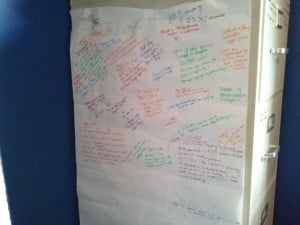There’s still time to prepare!
Anybody else getting anxious for November? I know I am. I’m so excited I have to DO something, so I’m brainstorming scenes for my book:

In addition to the #Plot101 Twitter event (still going strong!)(explanation here), I’m also lurking around the forums of the NaNoWriMo site. Feel free to add me as a writing buddy. You might be able to find me under the  enigmatic name of JordanMcCollum. That 0 word count is bugging me…..
enigmatic name of JordanMcCollum. That 0 word count is bugging me…..
As I’ve worked on all these things, I’ve had to review all my favorite plotting methods and character posts—on others’ blogs, and on my own. So if you’re getting ready for NaNoWriMo, here are some writing resources on my site that I’ve been thinking about and studying, and I hope they might help you prepare, too.
The plot thickens, my series on plotting, highlights plot structures and methods including the three act structure, Larry Brooks’s story structure, the Snowflake method, the Hero’s Journey, and now Blake Snyder’s Save the Cat (also available as a PDF, but it hasn’t been updated to include the Save the Cat posts).
Creating sympathetic characters—while you can edit a great deal of sympathy into your characters, keeping these things in mind as you write can help you get it right the first time.
Backstory—figuring out your character’s life story, what to leave out, and where to start your story.
Tension, Suspense and Surprise—vital elements (I mean, these things often keep me going through a first draft!), though they can be a bit tougher to get right on the first try.
And, depending on how you write, you might be able to try out some new techniques with Deep POV or dialogue—or save those for editing.
Are you NaNoing? What are you doing to prepare?
Updated from Nano 2011 & 2012
 And then I found
And then I found 
